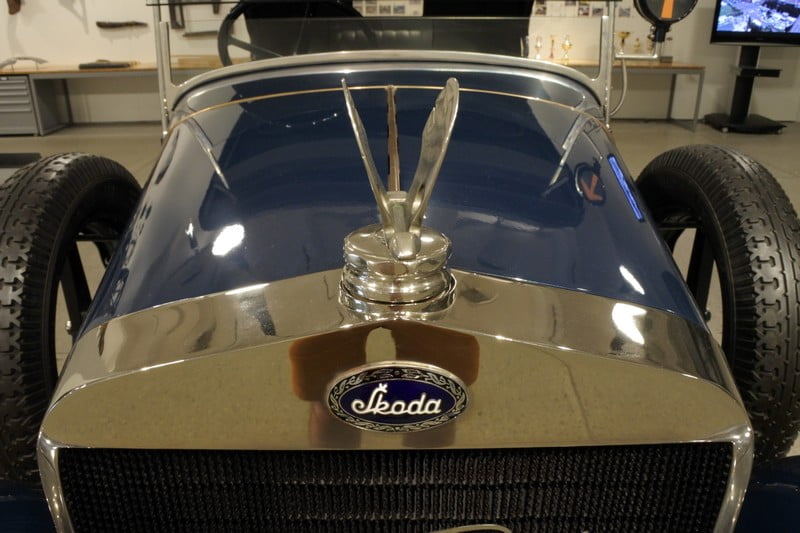Share This Article
While planning my visit to Tarnów, I knew that the Jewish subject in this city would certainly interest me. Tarnów Jews played a large part in creating the town, and their traces are still visible today. Many of them have wiped out time and discovering them is quite a challenge!
When planning a trip around Tarnów it is worth getting a folder distributed by the Tourist Information Center – “Tarnów Region – Jewish Culture”. I have descriptions of several objects for you, but you can find many more!
Tarnów Jews – a brief history
The first records of Jewish settlement in the suburbs of Tarnów come from the 15th century. In the next century, Jews were allowed to buy several houses within the city walls, but only on one of the streets. In 1581, the privilege of prince Konstanty Wasyl Ostrogski (the owner of Tarnów) guaranteed safety for the Jews in Tarnów, but 52 years later a decree was issued prohibiting the admission of Jews and their dealing with, inter alia, trade. In the middle of the 18th century, the city again allowed merchants to settle. At the end of the 18th century, 1,200 Jews lived in Tarnów. Then a school was established (and at the end of the 19th century another one), and in 1842 a hospital.
In 1890, Jews constituted 42% of the total population of Tarnów (over 11,000 people). Over the years, the synagogue ceased to be sufficient and in 1908 the construction of the New Synagogue was completed. The Second World War did not spare Tarnów. In November 1939, the Germans burned down and destroyed all synagogues and houses of prayer, and in 1941 they established a ghetto in which over 40,000 Jews, not only from Tarnów, were detained. In 1942, mass executions of the Jewish population began. Several thousand people were murdered in the streets of the city and in the Jewish cemetery. Several thousand Jews from Tarnów were transported to the death camps in Bełżec and Oświęcim. In 1943, the liquidation of Jews from Tarnów began. About ten thousand people were killed and the rest were transported to the concentration camp in Płaszów.
Synagogues of Tarnów Jews
Currently, there is no synagogue in Tarnów. One is left by a column located in the cemetery, and on the other by a bimah standing near the Market Square. According to various sources, there were about 40 prayer houses in Tarnów. All of them were destroyed when the Germans entered in 1939.
Let’s start with the old synagogue, i.e. the one after which the bimah survived. It is located at ul. Żydowska 12 (next to the Rybny Square). It was erected in 1630 on the site of an earlier wooden structure that burned down. The building was destroyed twice during fires, in 1663 and in 1814. After both of these events, however, it was rebuilt and expanded. The synagogue was built in the Mannerist and Baroque style. As I mentioned a moment ago, it was unfortunately burnt down in 1939, and the remains of it is a canopy-shaped bimah. In 1986 it was covered with a roof and underwent conservation. Another trace of this synagogue is the fence on the side of ul. Jewish.
A similar fate befell the New Synagogue. Its construction began in 1865, but was not completed due to financial reasons until 1908. The building was designed by Kraków architect Władysław Ekielski. An interesting fact is that it was opened on the birthday of Emperor Franz Joseph (August 18). Thanks to this, it was sometimes called the Emperor Franz Joseph’s synagogue or the Jubilee synagogue. In 1939 she was set on fire and blown up shortly after. The only trace of the synagogue is the plaque at the corner of ul. Nowa and Waryńskiego as well as a column in the Jewish cemetery.
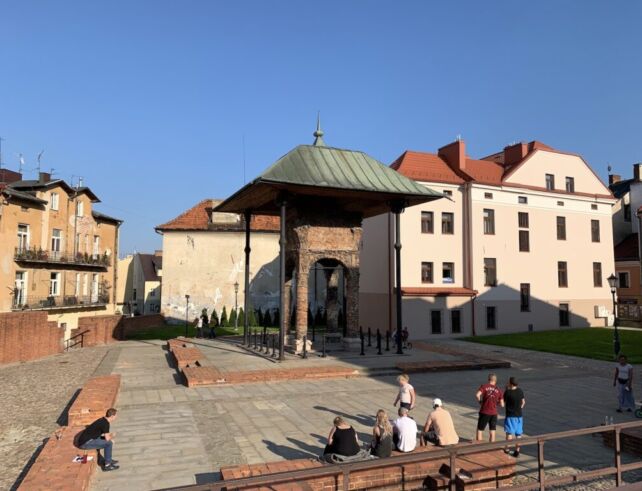
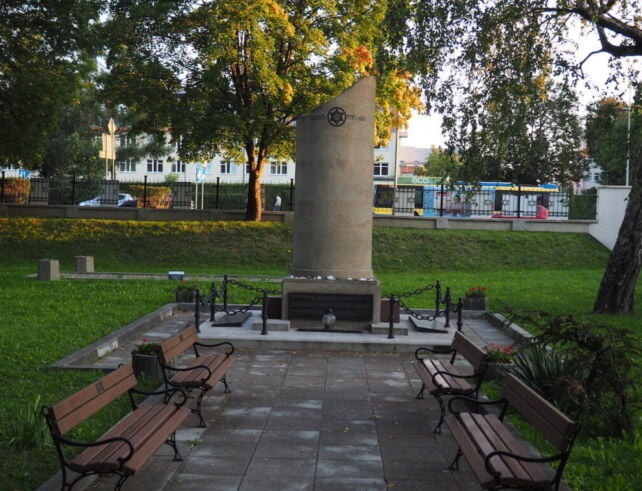
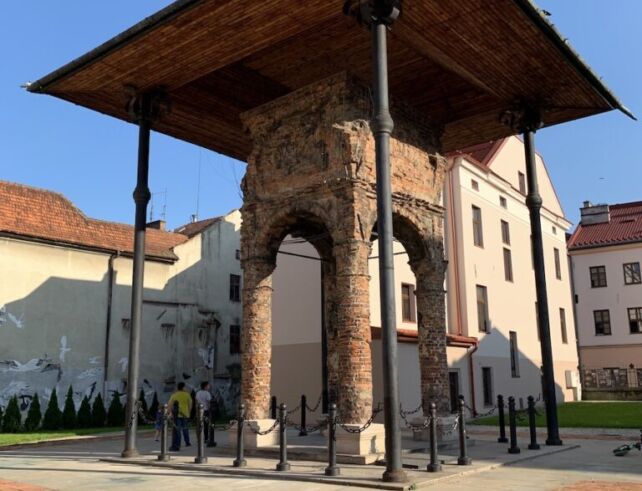
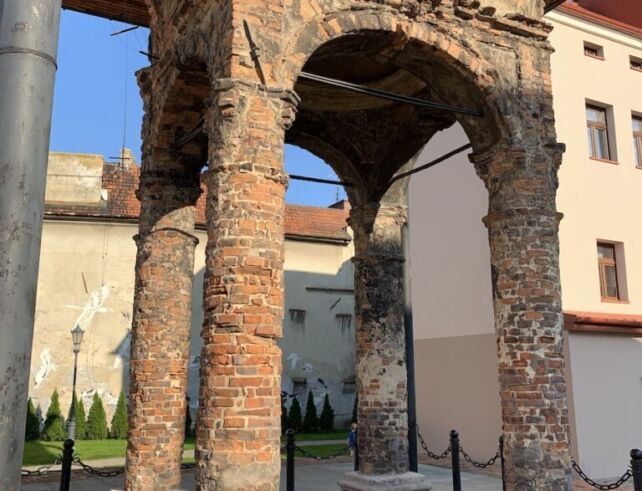
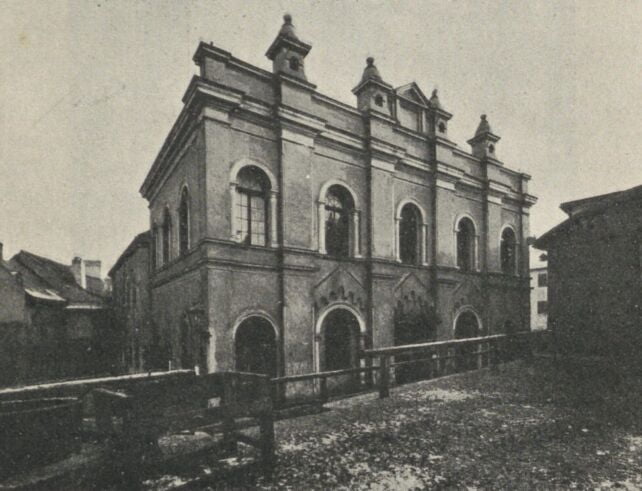
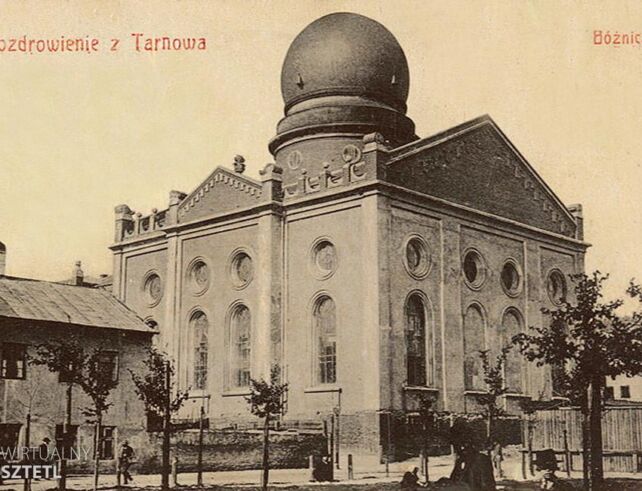
Jewish Cemetery
The Jewish cemetery in Tarnów is considered one of the oldest and largest in southern Poland. It is located at Szpitalna Street, and right next to the cemetery gate you will find several places where you can leave your car.
Its origins date back to the 16th century. It was devastated by the Germans during World War II. It was also the site of mass executions of the Jewish population of Tarnów. It is estimated that over 25,000 victims of the extermination are buried in mass graves. There are graves of soldiers from World War I in the cemetery, the oldest matzevah in the cemetery dates back to 1667. In total, there are about 3,000 matzevas in the cemetery.
An interesting fact is that the original cemetery gate is located in the Holocaust Museum in the USA, as indicated by a plate located on the wall.
The keys to the cemetery gate are available at the District Museum and Information Center in the Market Square.
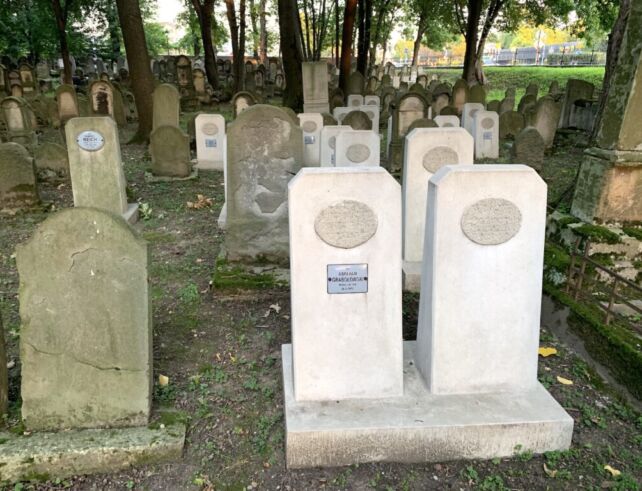
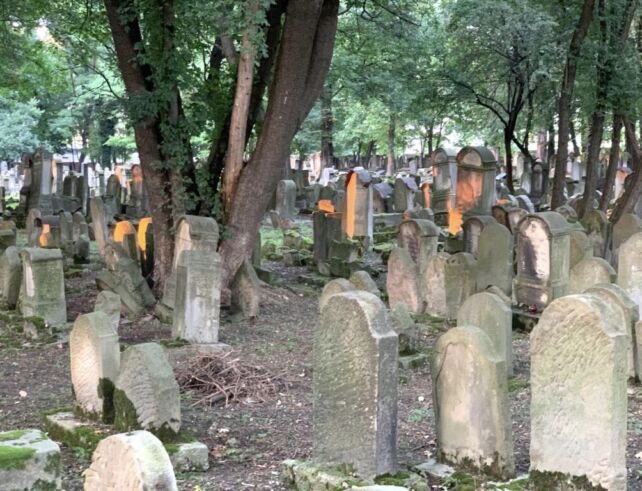
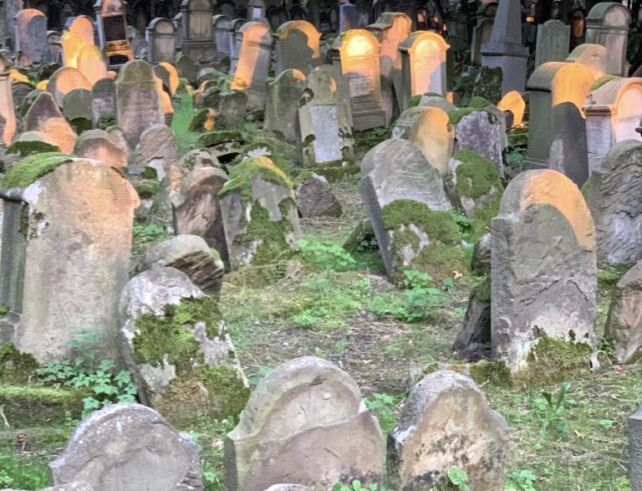
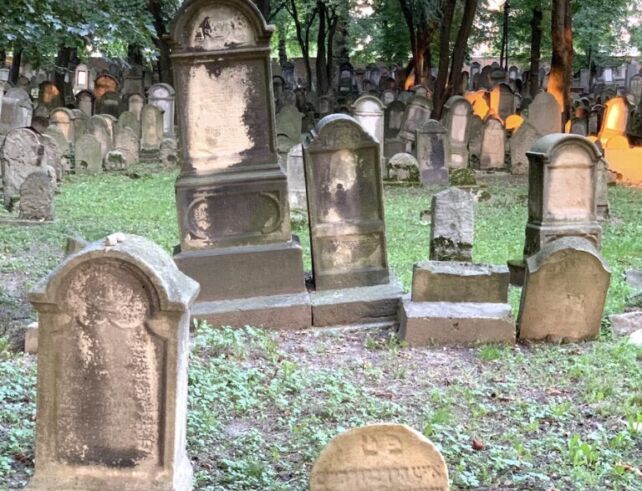
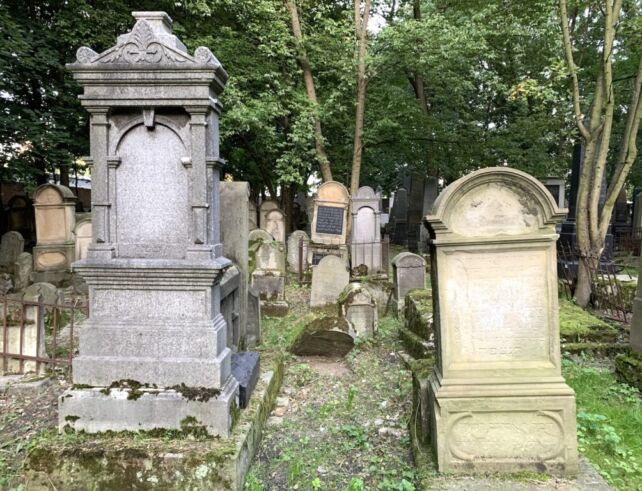
Mikvah
One of the buildings that has survived in good condition to this day is the former Jewish bathhouse. Apart from the mikveh, there were also swimming pools and steam baths. After the Second World War, there was a municipal bathhouse in the building, and now it is privately owned. There is, among others, the Stara Łaźnia restaurant, serving several dishes from the Jewish cuisine.
Despite the fact that the building is architecturally very interesting, the state of preservation is not the best, and the sticky advertising banners do not add to its charm.
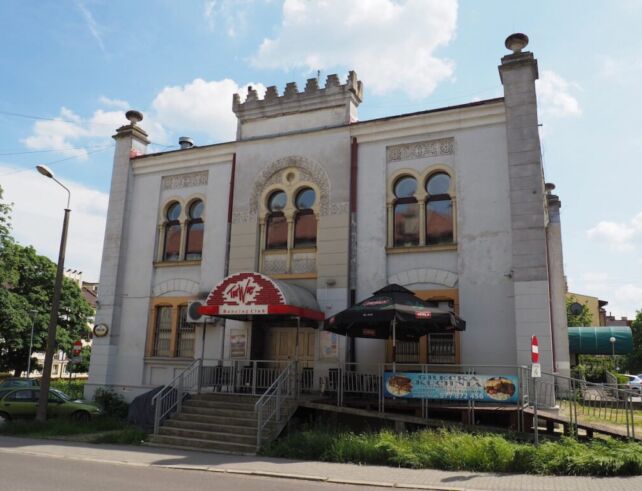
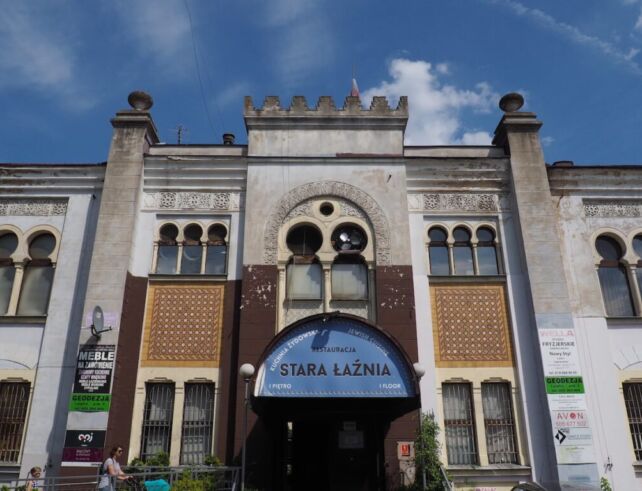
Other objects of Tarnów Jews
Hotel City
In the city you will find many other mementoes of the Jews living in Tarnów. One of them is the former City Hotel. It was erected by Majer Weiss in 1913. In addition to the hotel, the property originally also housed a restaurant. Ester and Majer Weiss did not survive World War II, they were probably shot in their home in 1942. The facility is located at ul. Wałowa 21.
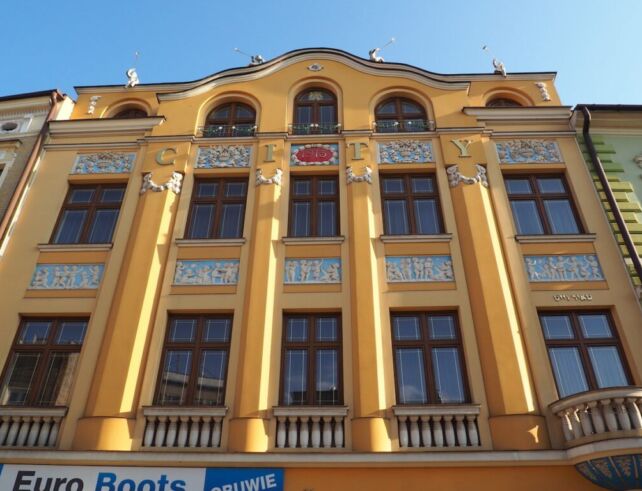
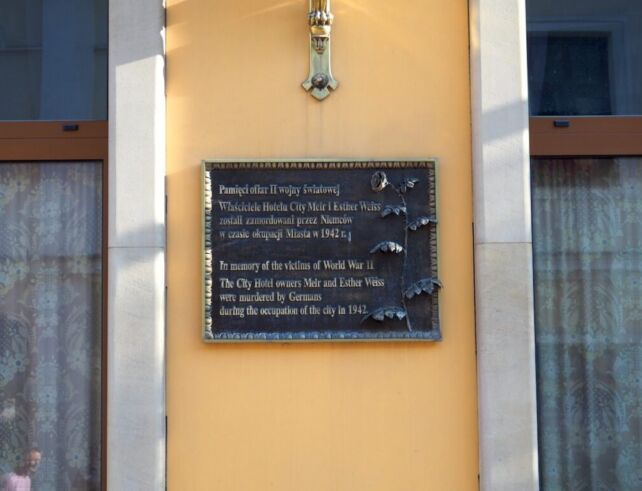
Monument to the 1st Transport of Prisoners to KL Auschwitz
Right in front of the mikveh building there is a square from which the first transport of prisoners to the Auschwitz death camp (Oświęcim) departed. It took place on June 14, 1940, and the camp in Oświęcim was then still a newly created place of extermination. Transport from Tarnów was the first mass transport in history. There were 728 people (mainly Polish political prisoners). In the square there is a monument dedicated to them and a “telephone box” with a list of the names of all those transported. You can hear about the history of Tarnów during the occupation.
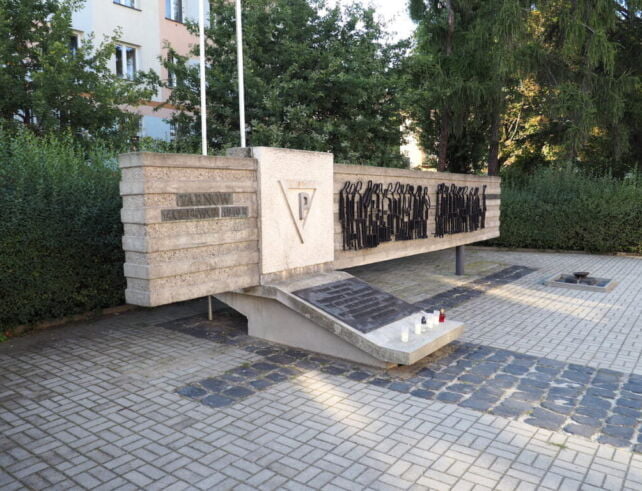
Goldhammer Street
Walking down Goldhammer Street, we can see the inscription visible at number 6 advertising food products in Polish and Yiddish. It is not big, but you will surely find it.
It is also worth getting to know the patron of this street. Eliasz Goldhammer (1851–1912) was the deputy mayor of Tarnów. He was an outstanding attorney and speaker. The last house of prayer, which was closed in 1993, was located at this street, Goldhammera 1. Its equipment (Aron Kodesh, bimahs and benches) is in the District Museum.
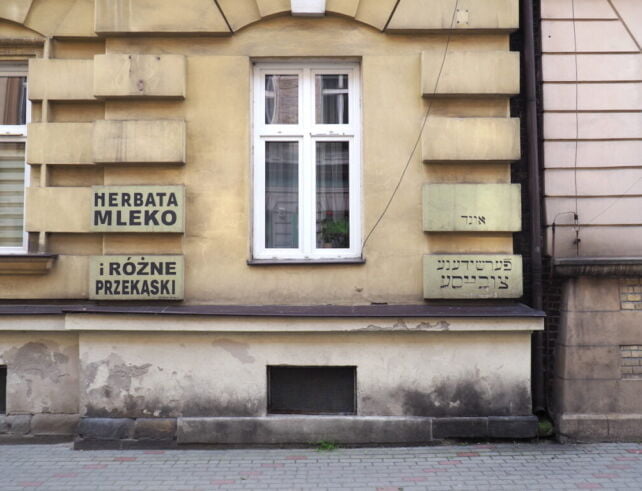
Monument
Near the aforementioned inscription, on the corner of Wałowa and Rybna Streets, there is a small monument. It is a silhouette of a man, specifically Roman Brandstaetter. The Jews of Tarnów actively participated in the life of the city, including the cultural life. Roman Brandstaetter was a famous Polish writer, playwright and poet, and he came from Tarnów.
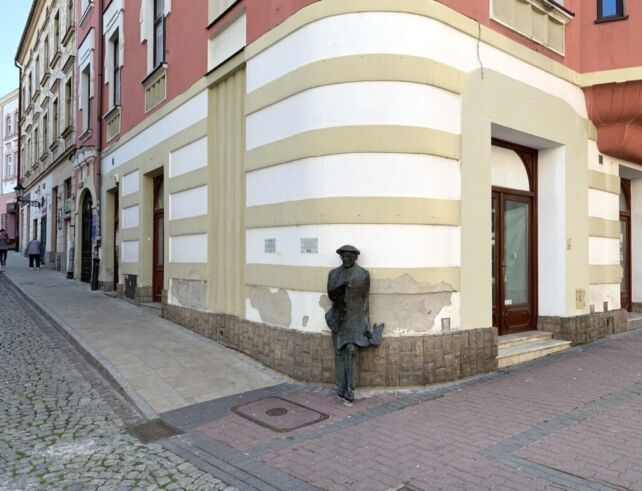
Dąbrowa Tarnowska
If you are interested in this subject, I also recommend visiting Dąbrowa Tarnowska, 20 kilometers away. Despite the fact that the Jewish cemetery located there is in a poor condition, the synagogue has recently been renovated and is very impressive.
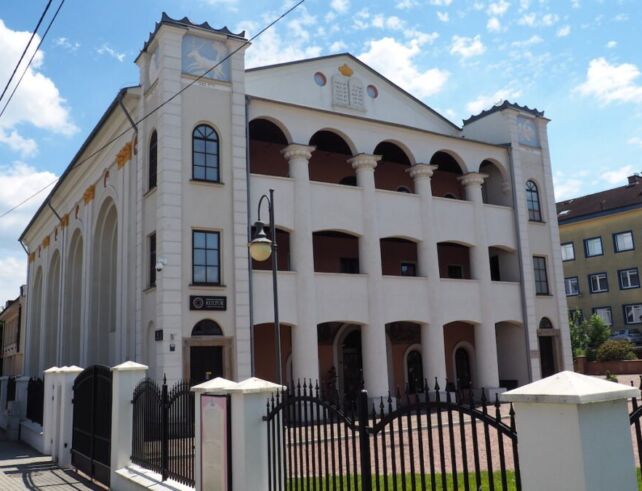
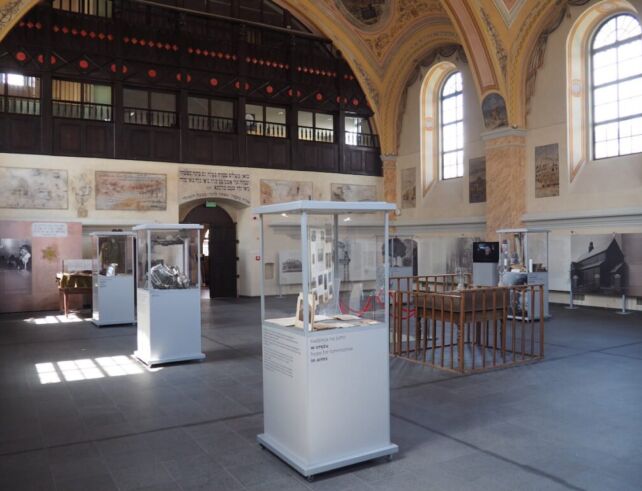
Tarnów Jews were people who were actively involved in the life of the city. They ran their businesses and were active in their communities. Today, only the traces I have presented to you are left of them!



